How to Harvest Leafy Greens
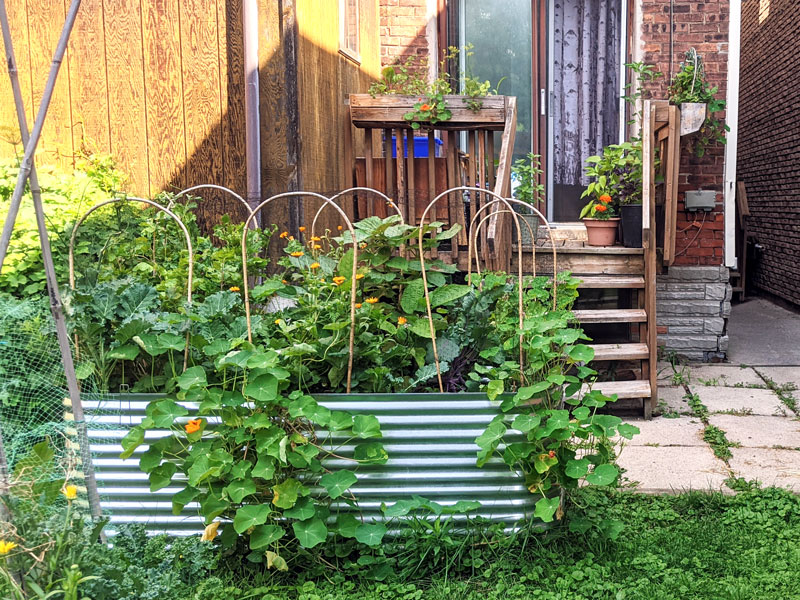
Humans have spent thousands of years cultivating their relationship with vegetables. We’ve come to rely on them, but to a large degree they have also have come to rely on us. Harvesting is the greatest expression of this special relationship. When I harvest my veggies, my plants are caring for me, and I am caring for them; they fill my belly, and I stimulate their growth.
For tiny gardens like mine, I get a tomato or a pepper here and there, but I really rely on my leafy greens for continuous harvests. The key to harvesting greens successfully is to understand how the plant grows. Let’s explore some of these growth patterns, and a few different methods of harvesting the most common types of greens which I outline below.
Bottom Up
Greens like kale, collards and lettuce grow from a single stalk, producing new growth from the center. The oldest leaves on a kale plant are on the bottom as the plant grows upwards. Don’t remove too much each time so you ensure there are enough leaves left for the plant to photosynthesize. Leaves that are yellow or damaged and that are unusable as people-food can simply be left on soil surface to decompose, becoming food for the many hungry soil microorganisms. At the end of the season kale will have a thick, bare stem with a pouf of leaves on the top.
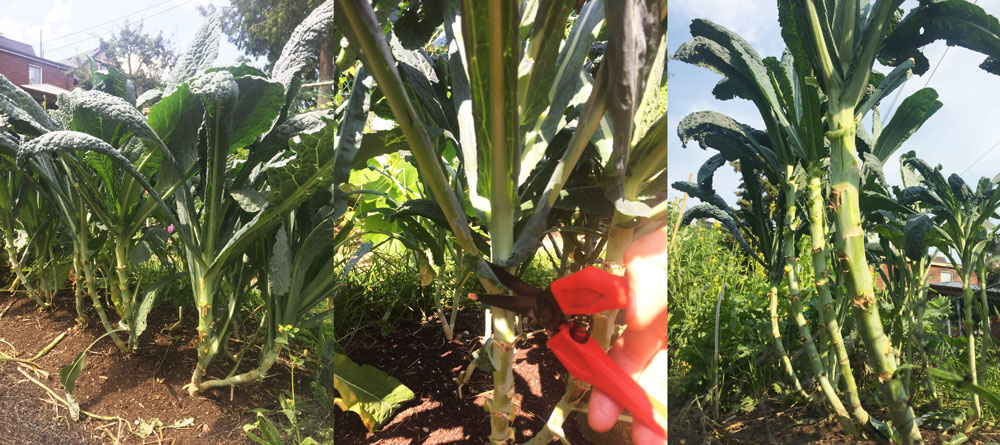
If you cut off the top of a kale plant it will not regrow and may even kill the plant—cringe! On the other hand, if kale is harvested from the bottom leaves up, you can continue harvesting well into the winter.
Outside in
Like kale, chard and pak choy’s new growth comes from the center of the plant. Instead of growing upwards, chard tends to grow outwards. Older, outer leaves will be bigger and should be harvested as they tend to shade out the new growth. You can get away with harvesting a lot of the plant and it will still be able to regrow.
Similarly, new celery stalks will grow from the center of the plant, so the outer stalks should be harvested first if you intend to harvest continuously.
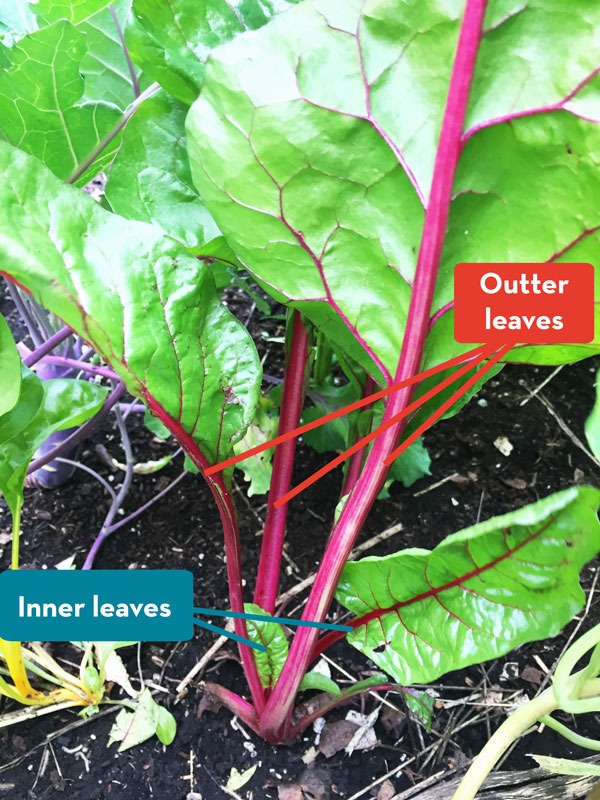 |
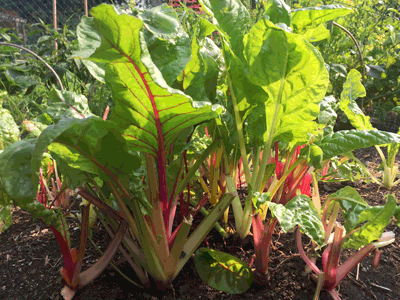 |
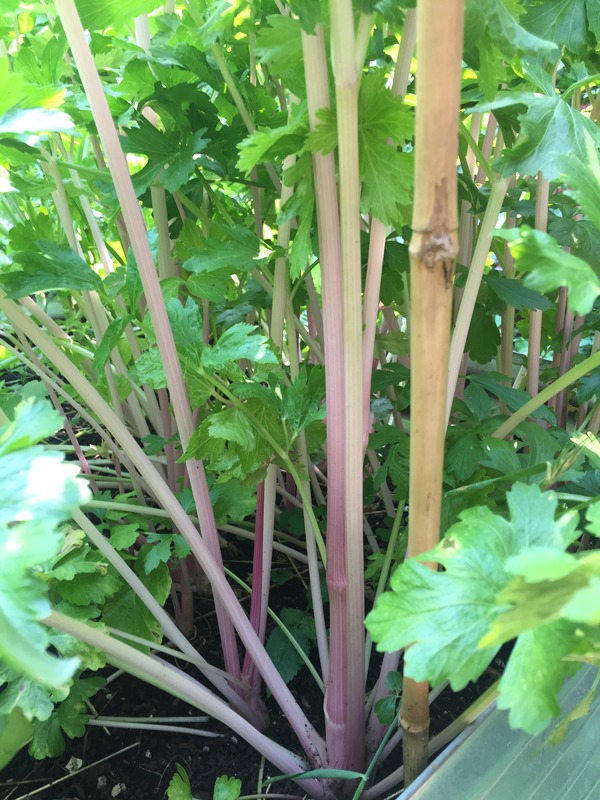 | |
| Harvesting chard to give new leaves more access to light. | Pink celery | ||
Top down
Some leafy greens like basil, callaloo, perilla/shiso produce side shoots so harvesting from the top of the plant will encourage side shoots to proliferate, thereby creating a bushier plant with more leaves for future harvesting.
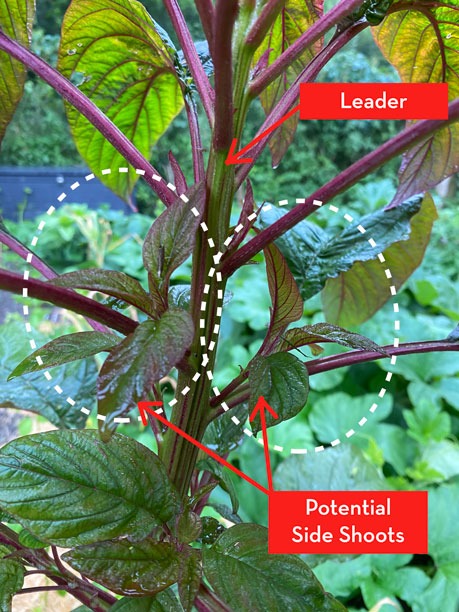 | 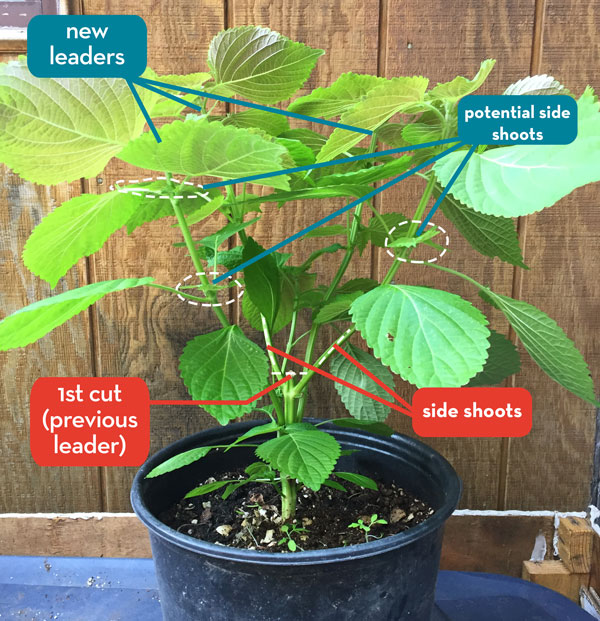 | |
| Leader and side shoots of an amaranth plant | Several new leaders and side shoots after cutting the first leader of a perilla plant, this means you can get at least double the leaves in the next harvest! |
If you harvest basil from the bottom up, like you do for kale, you would be harvesting the future growth before it’s had a chance to establish. The basil plant would be tall, lanky and sparse with small leaves—cringe!—which is a far cry from its full potential of becoming a luscious, delicious bush.
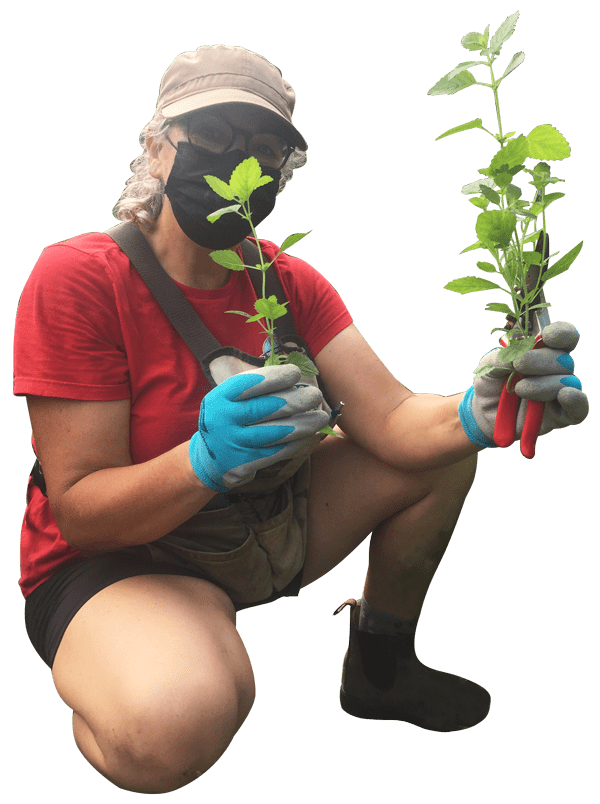
Mow down
Woody herbaceous plants like sage, oregano and rosemary can be harvested liberally. The more you harvest, the more side shoots develop and soon the plant becomes a lush and vigorous bush. Plants like lemon balm, mint and sage grow so prolifically that you can grab a bunch like you would a ponytail, and chop it by the handful.
Other plants regrow so quickly that you can simply mow the whole plant down, leaving an inch or so behind, and you can reliably expect them to regrow. Chives are a great example of this.
Another reason to amply harvest is to prevent plants from bolting, which is the process of sending up a flower stalk that then produces seeds. Lettuce, mustard, cilantro, spinach and arugula are all prone to bolting in the heat, causing their leaves to become bitter. These are great candidates for the Mow Down Method. If you leave a couple of inches of plant behind you will be rewarded with another harvest or two. Subsequent harvests won’t be as abundant as the first but are still worth the wait. By mid-summer we recommend removing exhausted, cold hardy greens to allow for a second succession planting of another variety of veggie.
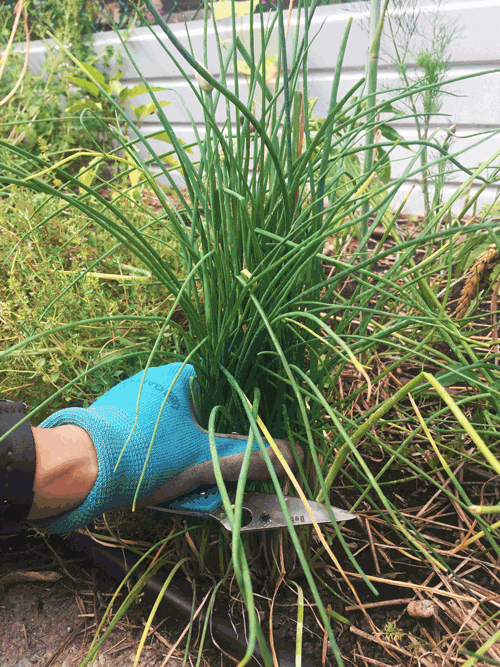 | 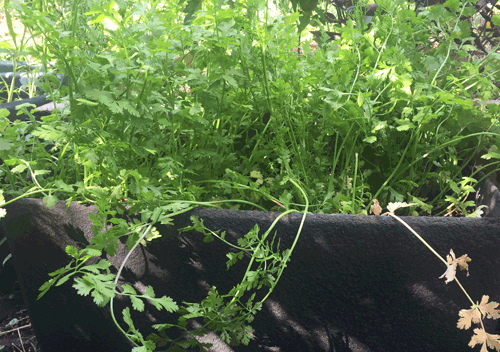 | 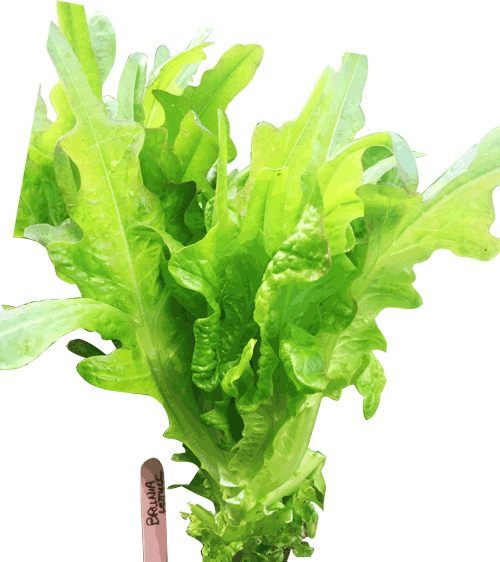 |
| Holding chives like a pony tail to harvest | Mowing down cilantro to one inch | Mowing down Lettuce |
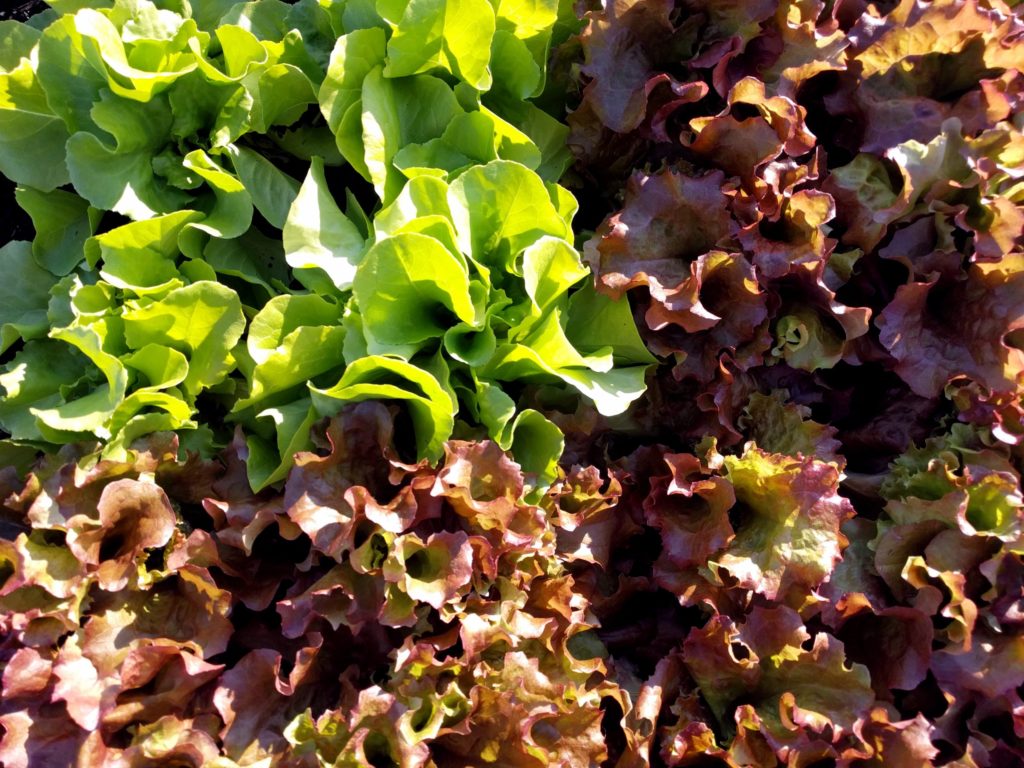
Anything goes
You may have already noticed that lettuce can be moved down or harvested from the bottom up like kale, or you can harvest the entire head and plant another succession of plants in its place. How you choose to harvest lettuce mostly depends on how densely you plant them. Dense plantings can be mowed down in a checkerboard pattern, allowing the plants that are left behind to expand into fully formed heads. Harvesting from the bottom up will provide small but continuous harvests for the longest time. I’ve also never seen nasturtium harvested wrong. Both leaves and flowers are edible and we tend to pluck them off as desired. They can also bounce back after being pruned heavily.
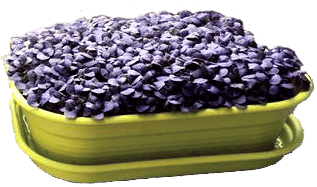
Microgreens
Of course, anything with edible leaves will also make great microgreens or baby greens. See our dedicated blog post on microgreens to see how you can harvest and eat fresh, homegrown greens all year round!
Summary
Here’s a quick summary you can refer to the next time you’re not sure how best to harvest your leafy greens and herbs.
| Plant | Harvest Method | |||||
| Bottom Up | Outside In | Top down | Mow down | Whole Plant | Microgreens | |
| Arugula | X | X | X | |||
| Callaloo | X | X | ||||
| Cabbage | X | X | ||||
| Celery | X | X | ||||
| Chard | X | X | ||||
| Collards | X | X | X | |||
| Kale | X | X | ||||
| Kohlrabi | X (leaves) | X (bulb) | X | |||
| Lettuce | X | X | X | X | X | |
| Mustard | X | X | X | |||
| Nasturtium | X | X | X | |||
| Pak Choy | X | X | ||||
| Perilla/Shiso | X | X | ||||
| Spinach | X | X | X | X | ||
| Basil | X | X | ||||
| Chives | X | X | ||||
| Cilantro | X | X | X | |||
| Dill | X | X | ||||
| Lemon Balm | X | |||||
| Mint | X | |||||
| Sage | X | |||||
| Thyme | X | |||||
Proper harvesting is an essential part of the gardening process that can significantly influence future harvests of the same plants. Learning how to get the most out of your plants means learning and improving good harvesting techniques.